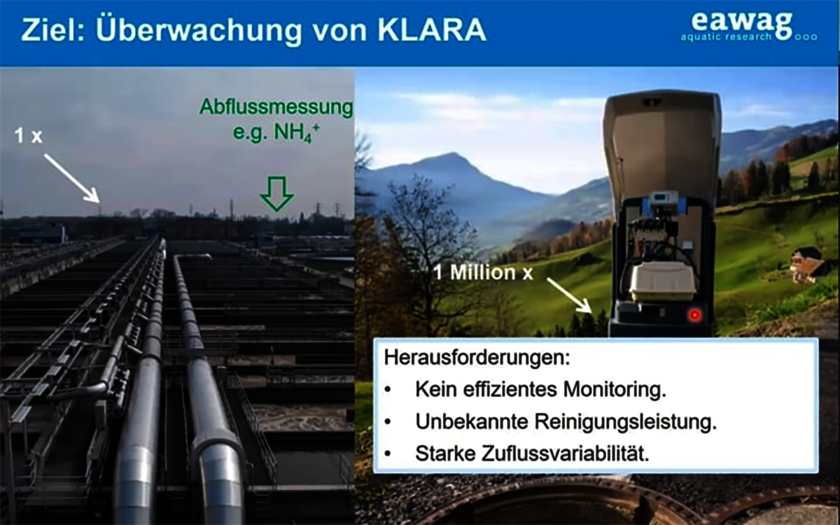Monitoring
Monitoring the treatment performance of on-site wastewater treatment plants
by Mariane Schneider
Before the start of this project, no method existed to efficiently monitor the treatment performance of on-site wastewater treatment plants (OST). Assessing the performance required regular visits during which composite samples are taken or frequent maintenance of online sensors would have needed to be carried out. Both cannot be done regularely and cost effectively for large numbers of spatially distributed OST. An exchange with practitioners showed that in practice hardly any measurements are taken on OST. Therefore, the goal was to find a new and efficient way to monitor large fleets of OST.
In the project, we were able to show that trend-based feature engineering can be used to extract relevant information about the treatment performance from cheap and unmaintained sensor measurements. This contrasts with current practice where most sensors are maintained on a weekly or monthly basis. The signal feature chosen for this so called soft sensor is influenced by specific biological processes. Therefore, the presence of these features can be used to indicate the completion of specific biological activities.
The method has been developed in the laboratory and tested in real OST of the sequencing batch reactor (SBR) type. The results suggest a shift of focus from obtaining data as accurate as possible towards obtaining the most relevant information about the treatment process instead. We want to highlight that if relevant information can be extracted, the data measured is accurate enough. The lessons learned are valuable for any Wings technology because distributed treatment systems (if not extremely robust) need to be monitored to serve as a valid engineering alternative to centralised systems. This study showed that by using unmaintained soft-sensors and trend based features, the monitoring of, up to this point, unmonitored OST systems is possible, which is an enabling factor for Wings technology.
Mariane Schneider conducted this study during her PhD at Eawag. She will continue her research on monitoring OST in a robotics and machine learning group at the University of Tokyo.
Key insights
- Unmaintained sensors contain useful information about the biological treatment process of OST
- Qualitative trend analysis is a powerful tool to monitor WINGS systems without retuning of the parameters for every individual system
Further reading
- Furrer, V., 2018. Remote Monitoring of On-Site Wastewater Treatment Plants by Means of Low-Maintenance Sensors: Data Collection and Interpretation from a SBR in Operation. ETH Zurich.
- Thürlimann, C.M., Udert, K.M., Morgenroth, E., Villez, K., 2019. Stabilizing control of a urine nitrification process in the presence of sensor drift. Water Res. 165, 114958. doi.org/10.1016/j.watres.2019.114958
Publications
- Schneider et al 2020: Beyond signal quality: The value of unmaintained pH, dissolved oxygen, and oxidation-reduction potential sensors for remote performance monitoring of on-site sequencing batch reactors https://doi.org/10.1016/j.watres.2019.06.007 DOI Preprint: 10.31224/osf.io/ndm7f
- Schneider et al 2020: Benchmarking Soft Sensors for Remote Monitoring of On-Site Wastewater Treatment Plants https://pubs.acs.org/doi/10.1021/acs.est.9b07760


